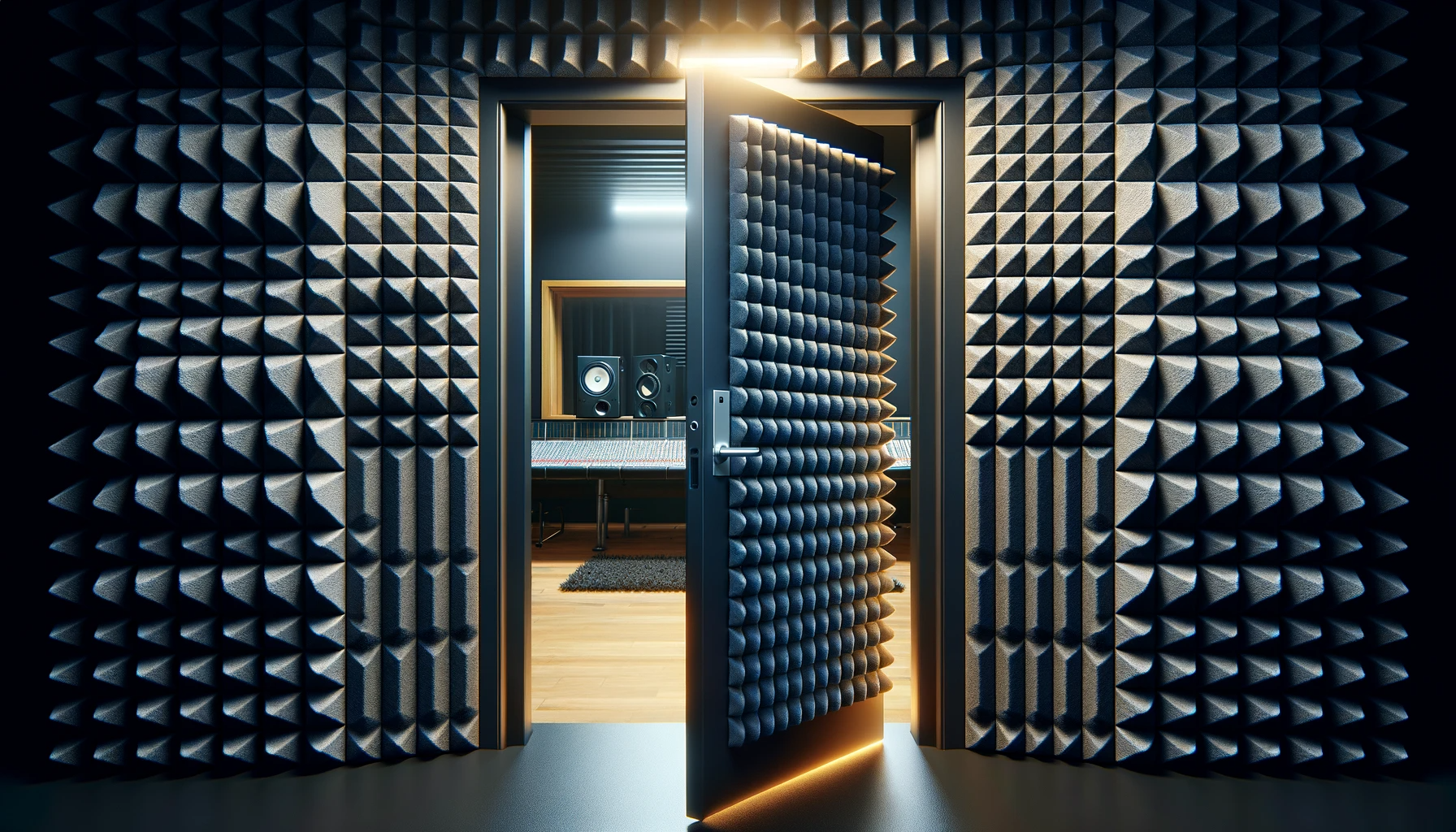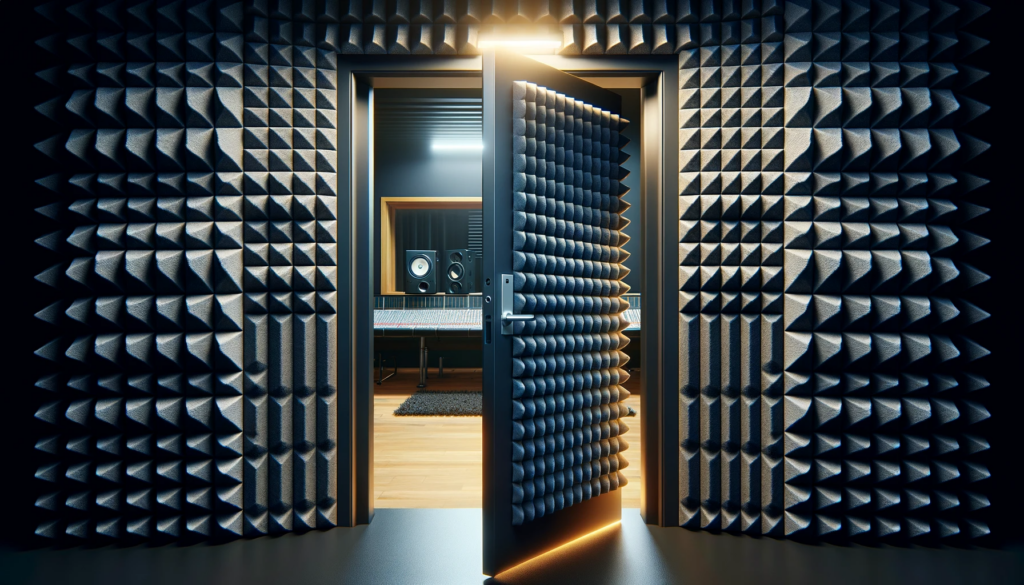
Table of Contents
The Myth of the Soundproof Door Cover
The search term soundproof door cover is a contradiction of terms. First, when you search for a soundproof door cover you must understand that there is no such thing. There is nothing you can cover a door with that will attenuate noise transmissions. If you are searching for a soundproof door cover you are seeking something that does not exist. If it did exist, it would not work on a wood door for many reasons.
The first reason would be if there is such a thing as a soundproof door cover, it would have to have the same density as the door itself to make any difference in the vibrational acoustics of noise transmission. Searching for a soundproof door cover is like trying to find a needle in a haystack. There is really no such thing as a soundproof door cover. Instead of searching for a soundproof door cover that can not work, let’s look at the noise transmission process involved in barrier design and construction.
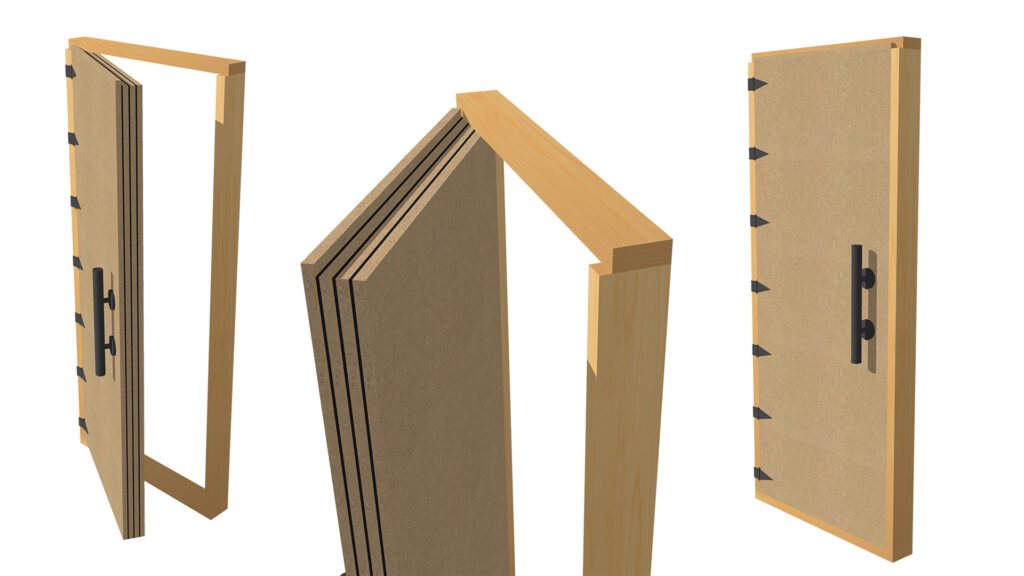
Understanding Noise Transmission in Structures
Noise is like water. It will find the weakest link in the structure and go right through it. A door or a window are the weakest links in any structure. When you are designing a barrier which is the structure that one builds between a noise source and a receiver, you must first measure the noise for frequency and amplitude. Frequency is where it lies on our human hearing spectrum. The amplitude is the strength of that noise at a given frequency.
You must measure frequency and amplitude over a seven day time period. We need a week’s worth of noise data so we can see what the lowest frequency of noise is an issue along with the strength of that noise. Noise that falls below 125 hz. is dramatically different in the treatment types that you use along with the mass or density of the barrier. We must have noise measurements so we can design the barrier to attenuate the lowest frequency with the strongest amplitude.
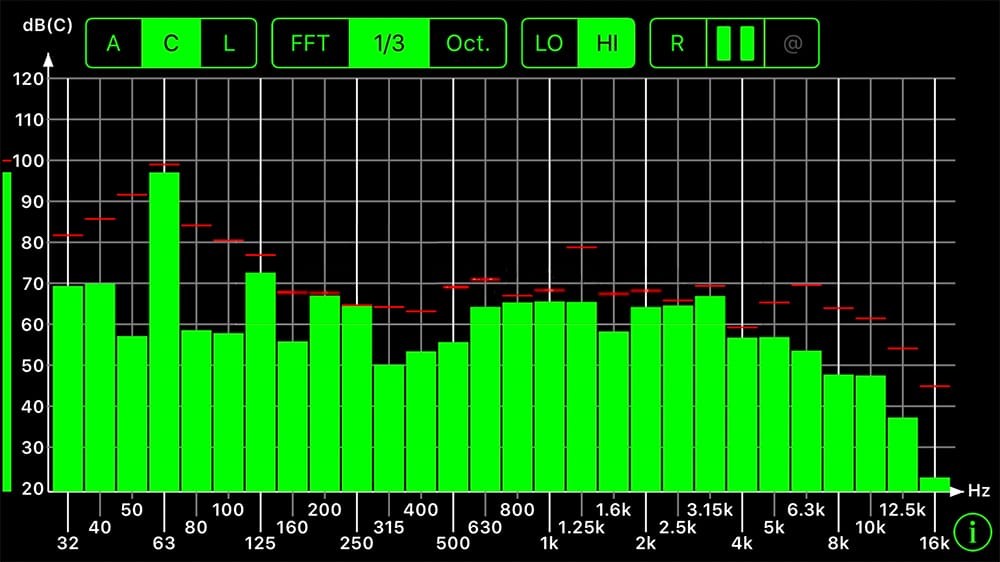
Collecting Data for Custom Noise Barrier Design
Once we have taken our frequency and amplitude noise data over a seven day time period using two measurements per day, we can move forward and enter the data on an on line data form. We need measurements at the loudest part of each day along with the quietest part of each day. At Acoustic Fields, we have apps that we can send you which you will download onto your phone.
You will take the frequency and amplitude noise numbers using your phone and record the measurements on our online form. You will send us the noise data and we will compare your noise data with other noise data and create a barrier design. Once we have created the design, we will send you a graphic showing you the structure to build along with the required materials. All of our designs use standard construction methodologies. There is nothing exotic or complicated in our designs.
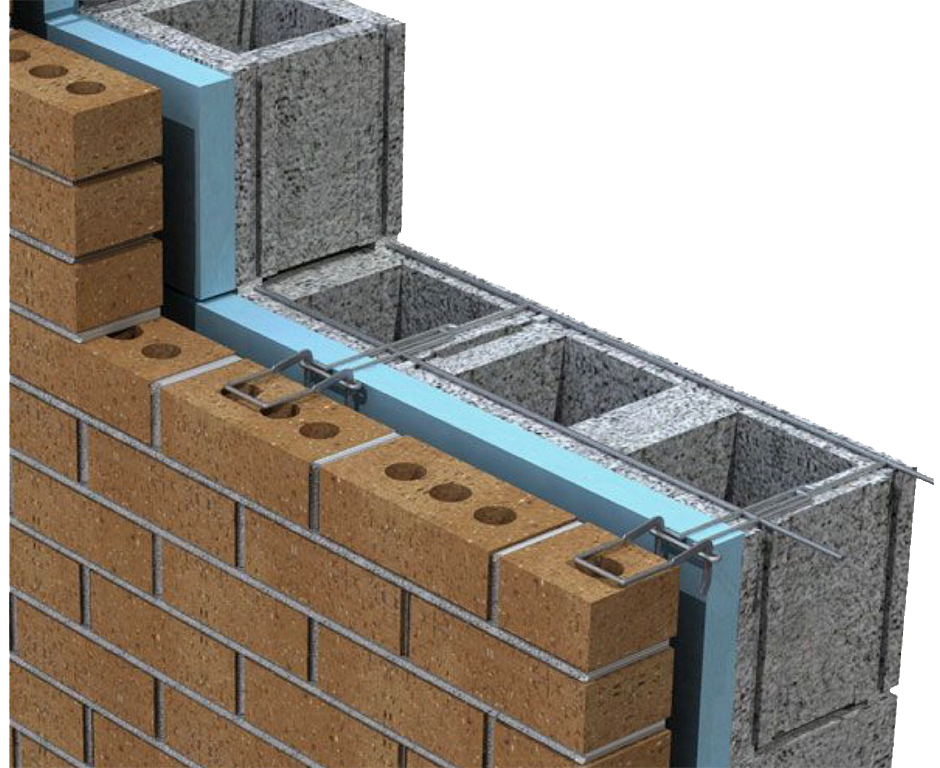
The Challenge of Low-Frequency Noise in Barrier Design
There is a large difference in barrier designs to reduce noise if the noise falls below 125 hz. Lower frequency noise requires a barrier design that has more material types, a greater weight or density, and takes up more physical space. Lower frequency barrier designs can be up to 12″ deep in some cases depending on the frequency and amplitude of the noise issue. This is why it is so critical to measure the noise you are experiencing.
Every material type and the construction methodology is determined by the frequency and amplitude of the noise. This is also why we must measure noise over a seven day time period. We must know if certain days are louder than others and are at lower frequencies. When we look over the week’s worth of data, we want to design our barrier to manage the lowest frequency that is the strongest in strength. If we use this approach, all other frequencies and amplitudes of noise will be taken care of.
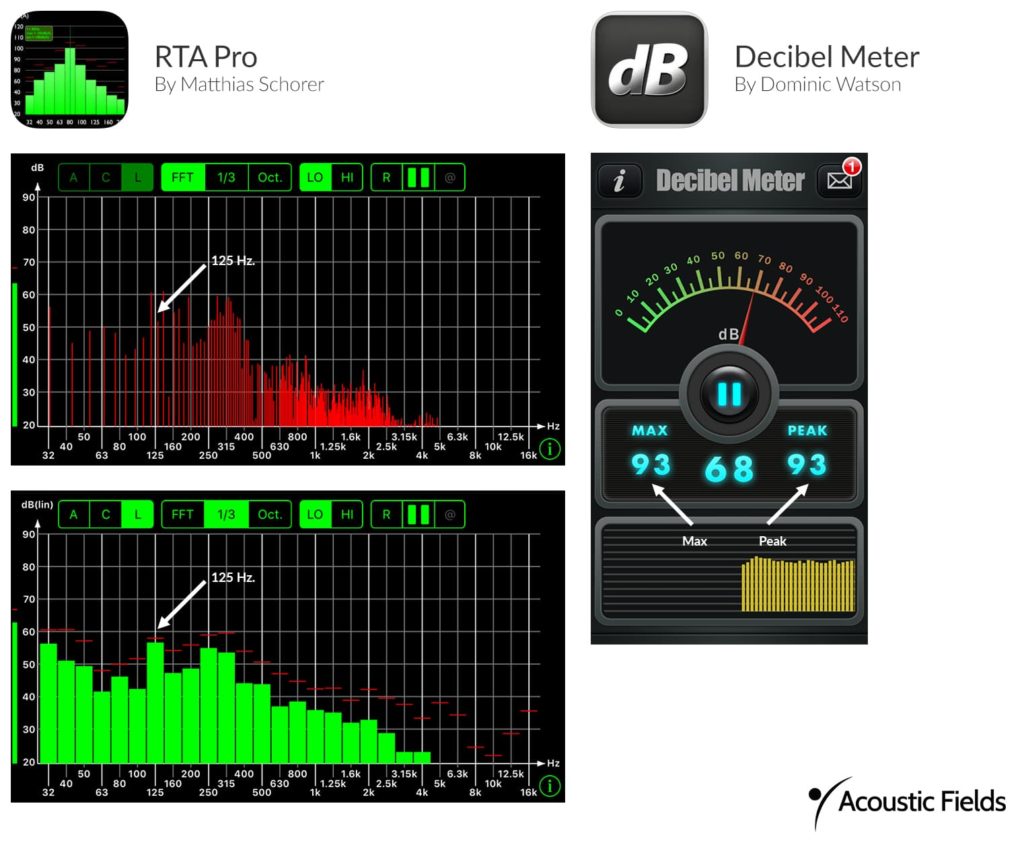
The Importance of Comprehensive Noise Analysis for Effective “Soundproofing”
Sound or noise is like water. It will find the weakest link in the structure and go through it. Barrier design and build is a permanent construction fix. This is why it is critical to measure all noise issues for frequency and amplitude over a one week time frame. With noise, you do not want to spend one dollar more than you have to since you will never get it back. It is built into the structure and you will not receive any credit for having a quiet room in an appraisal of the property.
With all noise issues, the carpenter adage of measure twice and cut once really applies. When we are designing any critical listening environment, we actually have three walls that we must consider. We have the barrier wall which is for noise transmission. We then have the climate control wall which keeps the room warm and cool. The third wall is the treatment wall which deals with the absorption and diffusion technologies to manage the energy within the room itself.


